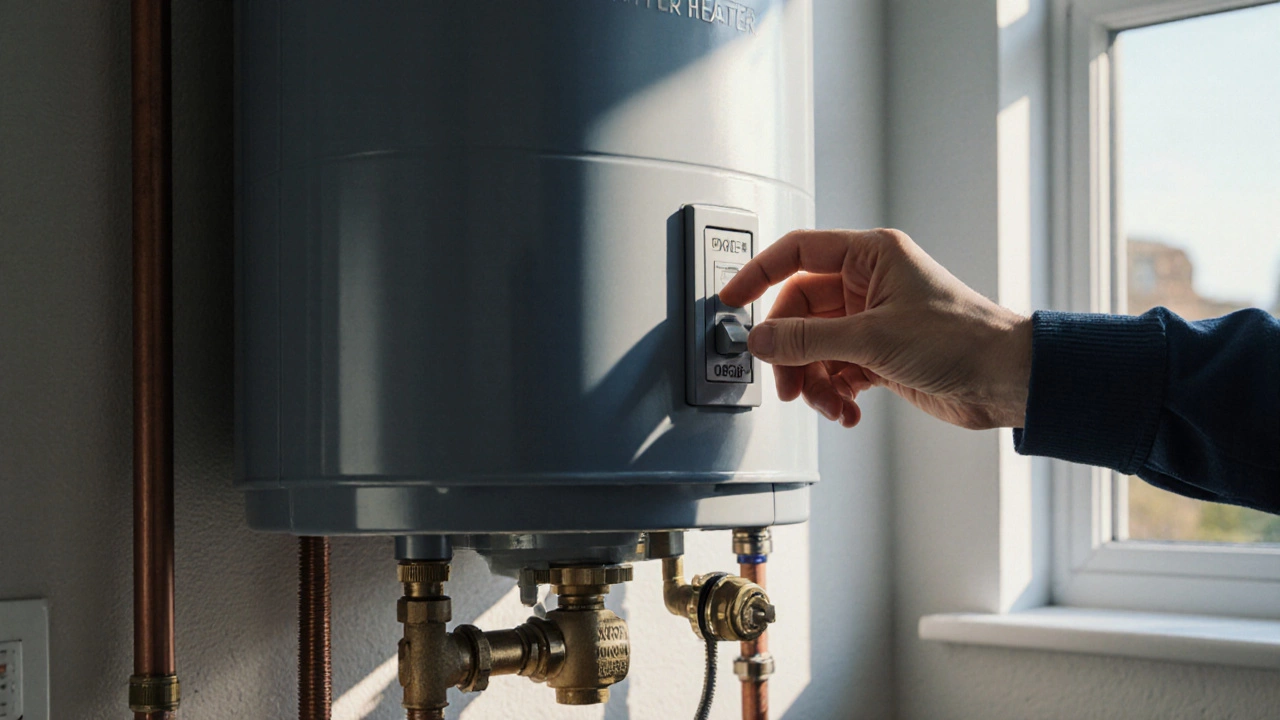
Learn the step‑by‑step checklist to diagnose a non‑working hot water heater, from safety shutdowns to key component tests, plus maintenance tips to prevent future failures.
When dealing with tankless water heater issues, problems that affect the performance, reliability, or safety of on‑demand water heating units. Also known as tank‑less heater faults, these issues often show up as cold showers, error codes, or strange noises. Understanding the root causes saves you time, money, and the hassle of a full system replacement.
One of the first related entities you’ll meet is the water heater, any device that heats domestic water for bathing, cooking, or cleaning. A tankless water heater is a subtype that heats water only when you need it, unlike traditional tank models that keep a reservoir hot. Another key player is the boiler, a closed‑system heater that supplies hot water and sometimes central heating. While boilers and tankless heaters use different technologies, they share common maintenance needs such as scaling control and proper venting. Finally, the water heater reset button, a safety feature that shuts down the unit when overheating is detected plays a crucial role in preventing damage during a fault.
Tankless water heater issues encompass three main categories: mineral scaling, ignition or flame problems, and flow‑rate restrictions. Scaling builds up when hard water deposits copper, calcium, and magnesium on the heat exchanger – a classic cause of reduced efficiency. Ignition failures happen when the gas valve or electronic igniter doesn’t spark, leaving the unit dead even though power is present. Low flow rates trigger error codes because the sensor thinks the heater is malfunctioning; a clogged filter or undersized pipe can be to blame. Each category requires a specific approach, but they all tie back to routine maintenance and system checks.
Scaling is a natural consequence of hard water, and in a tankless system it clogs the tiny passages where heat exchange occurs. The attribute “hardness level” directly influences scaling speed: water with more than 150 mg/L of calcium carbonate is considered hard. When scaling reaches a critical threshold, the heat transfer drops, and the unit may shut off to protect itself. The solution is a regular descaling schedule using a citric‑acid solution. Most manufacturers recommend an annual flush; some homeowners with extremely hard water do it twice a year. Skipping this step not only reduces hot‑water output but also shortens the overall water heater lifespan.
Another important attribute is “temperature setpoint”. If the user raises the desired temperature too high, the heater works harder, which accelerates scaling and may trigger the reset button. Adjusting the setpoint to a comfortable 120°F (49°C) balances comfort and longevity. When the reset button trips, the unit cuts power to avoid overheating. Pressing it once is safe if the cause was a temporary spike; however, repeated trips signal an underlying issue that needs professional inspection.
Ignition problems often get confused with power outages. The truth is, a tankless heater’s electronic igniter requires a stable voltage and a clean gas supply. A faulty pressure sensor or clogged burner can prevent the flame from establishing. Most units display an error code like “E3” or “F4”, which points directly to the ignition circuit. Checking the gas line for blockages and confirming that the electrical connections are tight are quick DIY steps. If the error persists, it’s time to call a certified appliance repair, service that specializes in fixing household devices technician who can safely replace the igniter or pressure sensor.
Flow‑rate restrictions are often the most overlooked issue. A tankless heater expects a minimum flow to sustain the heat‑exchange reaction. If the faucet aerator is clogged, the water pressure drops below the required threshold, and the unit shuts off to avoid damage. Simple fixes include cleaning or replacing aerators, checking for partially closed shut‑off valves, and ensuring the pipe diameter matches the manufacturer’s specifications. In larger homes, installing a recirculation pump can help maintain adequate flow, especially during peak demand.
These three problem areas intersect with the broader topic of boiler repair, maintenance and troubleshooting of heating systems that share similar components. For instance, both tankless water heaters and boilers use heat exchangers that suffer from scaling, and both have safety reset mechanisms. Understanding one helps you troubleshoot the other, making your overall home‑maintenance knowledge more cohesive.
To summarize the relationships: Tankless water heater issues encompass scaling, ignition failure, and flow‑rate problems; they require regular descaling, proper setpoint adjustment, and occasional professional inspection. The water heater reset button influences system safety by cutting power during overheating. Boiler repair knowledge overlaps with tankless troubleshooting because both rely on heat‑exchange efficiency and safety controls. Appliance repair expertise ties everything together, ensuring you get the right help when DIY steps aren’t enough.
Below you’ll find a curated set of articles that dive deeper into each of these aspects. From lifespan calculators to step‑by‑step reset button guides, the collection gives you the practical tools you need to keep your tankless water heater humming smoothly. Ready to explore the details? Continue scrolling to discover more specific fixes, cost‑benefit analyses, and expert tips tailored to South Shields homeowners.

Learn the step‑by‑step checklist to diagnose a non‑working hot water heater, from safety shutdowns to key component tests, plus maintenance tips to prevent future failures.